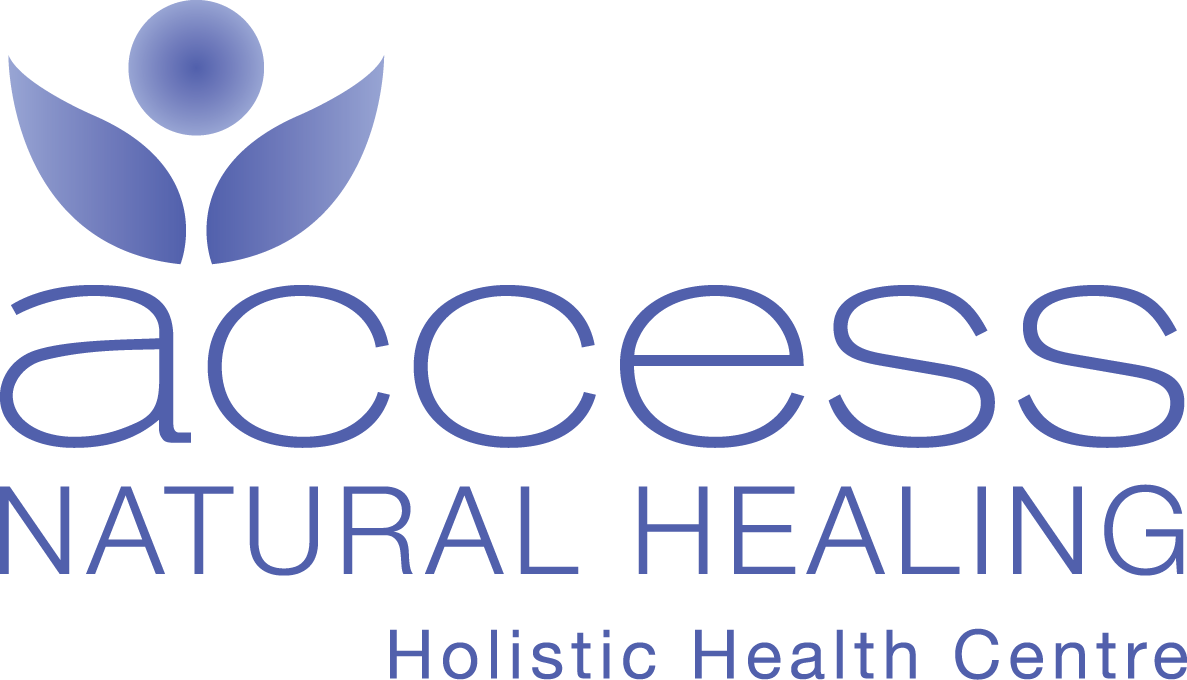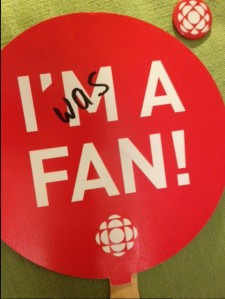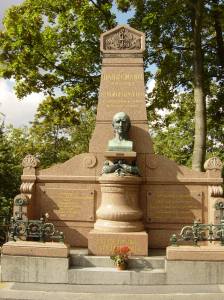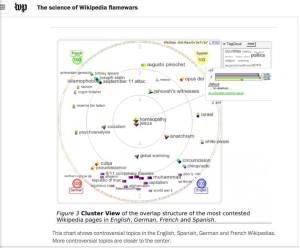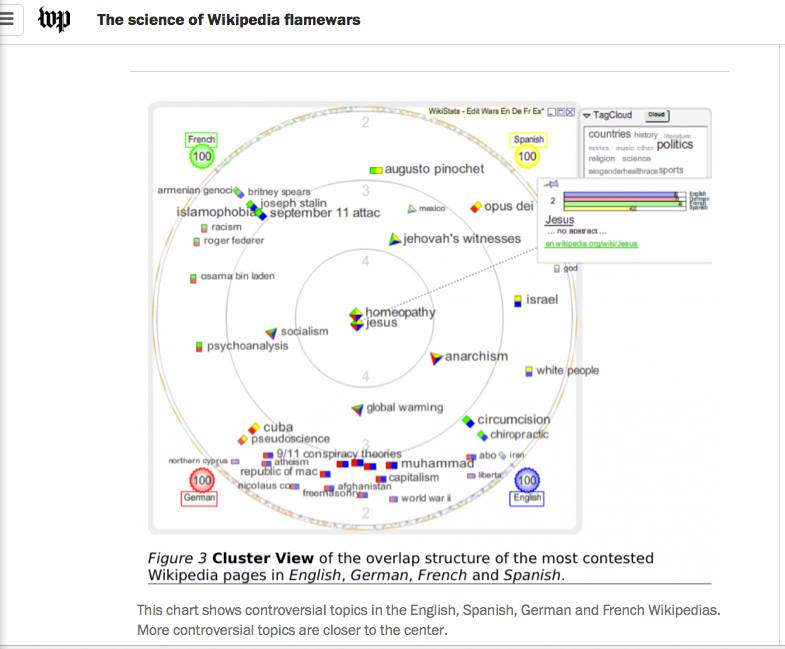Dysfunction at Wikipedia on Homeopathic Medicine by Dana Ullman www.twitter.com/HomeopathicDanaPosted: 10/10/2014 10:05 am EDT Updated: 10/10/2014 3:59 pm EDT
In April, 2014, I had the happenstance to run into Jimmy Wales, the co-founder of Wikipedia, on the streets of Vancouver. I was there to lecture to a group of medical professionals, while he was attending the TED talks. I expressed my appreciation to him for creating Wikipedia. I also then expressed concern to him about the "unencyclopedic" tone and information in Wikipedia's article on homeopathy. He then encouraged me to express my concerns in writing, and this is that response.
It may surprise and even shock most people to learn that, according to the Washington Post, the two most controversial subjects on Wikipedia in four leading languages (English, French, German, and Spanish) are the articles on "Jesus Christ" and "homeopathy."
Because I know that you want Wikipedia to be the best modern resource of reliable information, my intent in writing is to show you where Wikipedia is falling below your high standards, and in fact, Wikipedia's article on homeopathy is providing strongly biased, inaccurate information. This strong bias is a symptom of a deeper problem at Wikipedia in select articles on topics that challenge dominant medical and scientific worldviews. After reading the below body of scientific evidence on the subject of homeopathic medicine, I hope that we can engage in a dialogue that will help reduce the amount of misinformation that pervades certain subjects, such as homeopathy.
Evidence of the strong bias against homeopathy and against an objective encyclopedic tone is evident throughout the article. I will first focus on the second sentence of the first paragraph of the article and the 6 references which purport to substantiate these claims:
Homeopathy i/ˌhoʊmiˈɒpəθi/ (also spelled homoeopathy or homœopathy; from the Greek ὅμοιος hómoios "like-" and πάθος páthos "suffering") is a system of alternative medicine created in 1796 by Samuel Hahnemann, based on his doctrine of like cures like, according to which a substance that causes the symptoms of a disease in healthy people will cure similar symptoms in sick people.[1] Homeopathy is a pseudoscience[2][3][4] and its remedies have been found to be no more effective than placebos.[5] [6]
References from Wikipedia's article on "Homeopathy":
Hahnemann, Samuel (1833). The Homœopathic Medical Doctrine, or "Organon of the Healing Art". Dublin: W.F. Wakeman. pp. iii , 48-49 . "Observation, reflection, and experience have unfolded to me that the best and true method of cure is founded on the principle, similia similibus curentur. To cure in a mild, prompt, safe, and durable manner, it is necessary to choose in each case a medicine that will excite an affection similar (ὅμοιος πάθος) to that against which it is employed." Translator: Charles H. Devrient, Esq.
^ Tuomela R (1987). "Chapter 4: Science, Protoscience, and Pseudoscience". In Pitt JC, Marcello P. Rational Changes in Science: Essays on Scientific Reasoning. Boston Studies in the Philosophy of Science 98 (Springer). pp. 83-101. doi:10.1007/978-94-009-3779-6_4 . ISBN 978-94-010-8181-8.
^ Smith K (2012). "Homeopathy is Unscientific and Unethical". Bioethics 26 (9): 508-512. doi:10.1111/j.1467-8519.2011.01956.x .
^ Baran GR, Kiana MF, Samuel SP (2014). "Chapter 2: Science, Pseudoscience, and Not Science: How Do They Differ?" . Healthcare and Biomedical Technology in the 21st Century (Springer). pp. 19-57. doi:10.1007/978-1-4614-8541-4_2 . ISBN 978-1-4614-8540-7. "within the traditional medical community it is considered to be quackery"
^ Shang A, Huwiler-Müntener K, Nartey L, et al. (2005). "Are the clinical effects of homoeopathy placebo effects? Comparative study of placebo-controlled trials of homoeopathy and allopathy". Lancet 366 (9487): 726-32. doi:10.1016/S0140-6736(05)67177-2 . PMID 16125589 .
Evidence Check 2: Homeopathy - Science and Technology Committee , British House of Commons Science and Technology Committee, 22 February 2010, retrieved 2014-04-05
Is Homeopathy Really a "Pseudoscience"?
Wikipedia asserts that "Pseudoscience is a claim, belief or practice which is presented as scientific, but does not adhere to a valid scientific method, lacks supporting evidence or plausibility, cannot be reliably tested, or otherwise lacks scientific status."
The "editors" at Wikipedia have deemed homeopathy to be a "pseudoscience" even though randomized double-blind and placebo controlled studies that have been published in many of the best medical journals in the world have shown efficacy of homeopathic treatment for many common and serious health problems (below is a partial list of such studies):
Chronic obstructive pulmonary disease: Frass, M, Dielacher, C, Linkesch, M, et al. Influence of potassium dichromate on tracheal secretions in critically ill patients, Chest, March, 2005;127:936-941. The journal, Chest, is the official publication of the American College of Chest Physicians.
Hayfever: Reilly D, Taylor M, McSharry C, et al., Is homoeopathy a placebo response? controlled trial of homoeopathic potency, with pollen in hayfever as model," Lancet, October 18, 1986, ii: 881-6.
Asthma: Reilly, D, Taylor, M, Beattie, N, et al., "Is Evidence for Homoeopathy Reproducible?" Lancet, December 10, 1994, 344:1601-6.
Fibromyalgia: Bell IR, Lewis II DA, Brooks AJ, et al. Improved clinical status in fibromyalgia patients treated with individualized homeopathic remedies versus placebo, Rheumatology. 2004:1111-5. This journal is the official journal of the British Society of Rheumatology.
Fibromyalgia: Fisher P, Greenwood A, Huskisson EC, et al., "Effect of Homoeopathic Treatment on Fibrositis (Primary Fibromyalgia)," BMJ, 299(August 5, 1989):365-6.
Childhood diarrhea: Jacobs, J, Jimenez, LM, Gloyd, SS, Treatment of Acute Childhood Diarrhea with Homeopathic Medicine: A Randomized Double-blind Controlled Study in Nicaragua, Pediatrics, May, 1994,93,5:719-25.
ADD/ADHD: Frei, H, Everts R, von Ammon K, Kaufmann F, Walther D, Hsu-Schmitz SF, Collenberg M, Fuhrer K, Hassink R, Steinlin M, Thurneysen A. Homeopathic treatment of children with attention deficit hyperactivity disorder: a randomised, double blind, placebo controlled crossover trial. Eur J Pediatr., July 27,2005,164:758-767.
Jimmy, can you name ONE other system of "pseudoscience" that has a similar body of randomized, double-blind, and placebo-controlled clinical trials published in high-impact medical journals showing efficacy of treatment?
It is more than a tad ironic that this first paragraph in the Wikipedia article on homeopathy references only one article that was published in a peer-review medical journal. This one article by Shang, et al. has been thoroughly discredited in an article written by Lüdtke and Rutten that was published in a leading "high impact" journal that specializes in evaluating clinical research. The Shang meta-analysis is highlighted on Wikipedia without reference to any critique of it. The fact that there is no hint of any problems in the Shang review, let alone a reference to the Lüdtke and Rutten article that provided evidence of bias, is itself a cause for concern.
The Shang article is also the primary reference used by the widely ridiculed "Evidence Check" reports issued by the Science and Technology Committee of the British House of Commons, which also conveniently omits reference to the severe limitations of this one review of research. Further, the "Evidence Check" was signed off by just three of the 15 members of the original committee, never discussed or endorsed by the whole UK Parliament, and had its recommendations ignored by the UK Department of Health.
It should be made clear that the Shang meta-analysis was co-authored by M. Egger who is a well-known skeptic of homeopathy and who wrote to the Lancet that his hypothesis before conducting the review was that homeopathy was only a placebo effect. Readers were never informed of this bias.
The meta-analysis by Shang evaluated and compared 110 placebo-controlled trials testing homeopathic medicines with 110 testing conventional drugs, finding 21 homeopathy trials (19%) but only nine (8%) conventional-medicine trials were of "higher quality." Lüdtke and Rutten found that a positive outcome for homeopathy would have resulted if Shang had simply compared these high quality trials against each other. However, with some clever statistical footwork, Shang chose to limit the high quality trials to only 8 homeopathic and 6 conventional medical trials, a result that led to a "negative" outcome for homeopathy. Lüdtke and Rutten determined this review as biased for its "arbitrarily defined one subset of eight trials" and they deemed the entire review as "falsely negative."
By reducing the number of studies, Shang created convoluted logic that enabled his team to avoid evaluation of ANY of the above high quality studies that were all published in respected medical journals. Further, 7 of 8 homeopathic studies only tested one homeopathic medicine for everyone with the similar disease even though one of the primary tenets of homeopathy requires individualization of treatment. Many other extremely scathing critiques of the Shang research were published in the Lancet shortly after publication, including the exclusion of one high quality homeopathic study due to the questionable assertion that the researchers could not find a study in all of conventional medical research that treated patients with polyarthritis (arthritis that involves five or more joints).
Skeptics typically assert that the above high-quality studies published in high-impact medical journals are simply "cherry-picking" the positive studies, and then, they begin cherry-picking studies that had negative results. However, skeptics of homeopathy fail to differentiate good, sound scientific investigations that are respectful of the homeopathic method and those that are not. Just because a study was conducted with a randomized double-blind and placebo controlled method does NOT mean that the study gave the appropriate homeopathic medicine for each patient or even each group of patients. This ignorance is akin to someone saying that antibiotics are ineffective for "infections" without differentiating between bacterial infections, viral infections, and fungal infections. Ironically, skeptics of homeopathy consistently show a very sloppy attitude about scientific investigations.
What the Most Comprehensive Review of Homeopathic Research Found...
Skeptics commonly assert that various meta-analyses verify that homeopathy doesn't work and that homeopathic medicines are equivalent to the effects of a placebo. These skeptics typically chose to ignore various meta-analyses that were published in highly respected medical journals and that show positive benefits from homeopathic medicines. Skeptics also ignore the largest and most comprehensive review of research ever conducted...one that was funded by the government of Switzerland.
It is useful to know that the Shang/Egger meta-analysis was funded by the same Swiss government's Complementary Medicine Evaluation Program that also funded a much more detailed and comprehensive review of clinical research, preclinical research (fundamental physio-chemical research, botanical studies, animal studies, and in vitro studies with human cells), epidemiological evidence, and cost-effectiveness studies.
This more comprehensive Swiss government-funded report found a particularly strong body of evidence to support the homeopathic treatment of Upper Respiratory Tract Infections and Respiratory Allergies. The report cited 29 studies in "Upper Respiratory Tract Infections/AllergicReactions," with 24 studies having a positive result in favor of homeopathy. Six out of seven controlled studies that compared homeopathic treatment with conventional medical treatment showed homeopathy to be more effective than conventional medical interventions. When the researchers evaluated only the randomized placebo controlled trials, 12 out of 16 studies showed a positive result in favor of homeopathy.
Ironically, the Shang/Egger meta-analysis acknowledged that there have been at least eight clinical trials of patients with acute infections of the upper respiratory tract and that there is "robust evidence that the treatment under investigation works." And yet, Shang/Egger assert that this limited number of trials is inadequate for evaluating homeopathy, while at the same time they assert that eight other trials provided unquestionable evidence for damning homeopathy (it should be noted that Shang/Egger somehow determined that some of the studies on respiratory infection and allergy were not "high quality," even though numerous other meta-analyses have unanimously defined three trials by David Reilly as high quality (two were published in the British Medical Journal and one was published in the Lancet).
In actual fact, although some meta-analyses have had a "negative" result, there have also been a significant number of meta-analyses that have had positive results, including this partial list:
Linde L, Clausius N, Ramirez G, Jonas W, "Are the Clinical Effects of Homoeopathy Placebo Effects? A Meta-analysis of Placebo-Controlled Trials," Lancet, September 20, 1997, 350:834-843. Although a later review by some of these authors found a reduced significance, the authors never asserted that the significance was no longer present. Further, two of the lead authors of this article provided a very sharp critique of the Shang, et al. review of research (2005). Also, both Linde and Jonas wrote to the Lancet after the Shang/Egger article was published and asserted that the Lancet should be "embarrassed" by their publication of this article and the accompanied editorial (Lancet, 366 December 17, 2005:2081-2).
Kleijnen J, Knipschild P ter Riet G. Clinical trials of homoeopathy. BMJ 1991, 302, 316-23. Of the 22 best studies, 15 showed positive results from homeopathic treatment. The researchers concluded, "there is a legitimate case for further evaluation of homeopathy."
Jacobs J, Jonas WB, Jimenez-Perez M, Crothers D, Homeopathy for Childhood Diarrhea: Combined Results and Metaanalysis from Three Randomized, Controlled Clinical Trials, Pediatr Infect Dis J, 2003;22:229-34. This metaanalysis of 242 children showed a highly significant result in the duration of childhood diarrhea (P=0.008).
Kassab S, Cummings M, Berkovitz S, van Haselen R, Fisher P. Homeopathic medicines for adverse effects of cancer treatments. Cochrane Database of Systematic Reviews 2009, Issue 2.
Taylor, MA, Reilly, D, Llewellyn-Jones, RH, et al., Randomised controlled trial of homoeopathy versus placebo in perennial allergic rhinitis with overview of four trial Series, BMJ, August 19, 2000, 321:471-476. The BMJ published an editorial in the issue in which this study was published asserting, "It may be time to confront the conclusion that homeopathy and placebo differ...... This may be more plausible than the conclusion that their trials have produced serial false positive results" (This week in the BMJ. Homoeopathic dilutions may be better than placebo. BMJ 2000;321:0).
Jonas, WB, Linde, Klaus, and Ramirez, Gilbert, "Homeopathy and Rheumatic Disease," Rheumatic Disease Clinics of North America, February 2000,1:117-123.
Is Homeopathy Really "Implausible"?
The third paragraph in the Wikipedia article continues to show both strong bias against homeopathy and inaccurate information.
Homeopathy lacks biological plausibility[10] and the axioms of homeopathy have been refuted for some time.[11] The postulated mechanisms of action of homeopathic remedies are both scientifically implausible[12][13] and not physically possible.[14] Although some clinical trials produce positive results,[15][16] systematic reviews reveal that this is because of chance, flawed research methods, and reporting bias. Overall there is no evidence of efficacy.[12][17][18][19] Continued homeopathic practice, despite the evidence that it does not work, has been criticized as unethical because it increases the suffering of patients by discouraging the use of real medicine,[20] with the World Health Organisation warning against using homeopathy to try to treat severe diseases such as HIV and malaria.[21] The continued practice, despite a lack of evidence of efficacy, has led to homeopathy being characterized within the scientific and medical communities as nonsense,[22] quackery,[4][23][24] or a sham.[25]
Ironically, the article makes reference to articles written by known antagonists to homeopathy (such as E. Ernst and K. Atwood) that have not even been published in peer-review scientific or medical journals. Reference #10 by Ernst was published in "The Skeptical Inquirer," a magazine that is not listed in Index Medicus or any other respected scientific indexing service, and reference #11 by Atwood wasn't even published in a magazine but at a website. If and when any person tried to edit the article on homeopathy in any way in which homeopathy is presented in a positive light and makes reference to a "magazine" or a "website," that person would be laughed off of Wikipedia, and yet, the editors of the homeopathy article allow and even encourage the use of inappropriate skeptical references (according to Wikipedia's usual standards).
In the same way that Wikipedia's editors have inappropriately deemed homeopathy to be "pseudoscientific," they have also deemed that homeopathy lacks "plausibility." The definition of plausibility is: "having an appearance of truth or reason; seemingly worthy of approval or acceptance; credible; believable."
The journal, Langmuir, is the journal of the American Chemical Society, and in 2012, they published an important article that provided a plausible explanation for the actions of homeopathic medicines. First, they verified using three different types of spectroscopy that clearly showed that nanoparticles of six original medicinal agents persisted in solutions even after they were diluted 1:100 six times, thirty times, and even two-hundred times.
Avogadro's number predicts that none of the original medicinal agents would have ANY persisting molecules of the original medicinal substance would remain after 12 dilutions of 1:100. However, the scientists describe reasonable and even predictable factors that lead to the persistence of nanoparticles after their multiple dilutions. The scientists note that the use of double-distilled water in glass vials leads to varying amounts of silica fragments that fall into the water, as much as 6ppm. The vigorous shaking of the glass vial creates bubbles and "nanobubbles" that bring oxygen into the water and that increase substantially the water pressure (William Tiller, PhD, the former head of Stanford's Department of Material Science, estimated this pressure to be 10,000 atmospheres).
Ultimately, this increased water pressure forces whatever medicinal substance is in the double-distilled water into the silica, and every substance will interact with the silica in its own idiosyncratic way. Then, when 90% of the water is dumped out, the silica fragments predictably cling to the glass walls.
When skeptics of homeopathy reference Avogadro's number as "evidence" that homeopathic medicines beyond 24X or 12C have "no remaining molecules left," they are simply verifying their own ignorance of Avogadro's number because this widely recognized principle in chemistry does NOT account for the complexities of the silica fragments, the bubbles or nanobubbles, nor the increased water pressure. In fact, any serious scientist or educated individual who asserts that a homeopathic medicine is "beyond Avogadro's number" has no ground on which they stand. And yet, Avogadro's number is prominently a part of Wikipedia's article on homeopathy.
Despite the obfuscation throughout Wikipedia's article on homeopathy, in actual fact, the homeopathic pharmaceutical procedure called "potentization" is a clever, perhaps brilliant, method of creating nanoparticles of whatever substance is originally placed in the glass vial. Even more compelling is the significant and growing body of evidence that nanodoses of medicinal agents have several benefits over crude doses of the same substance, including enhanced bioavailability, adsorptive capacity, intracellular accessibility, increased ability to cross cell membranes and even the blood brain barrier, and of course, a substantial better safety profile.
The creation of nanodoses actually increases various characteristics of a substance's properties. Once a substance has an extremely small size but has larger surface area to volume ratio, the nanodose properties create increased chemical and biological reactivity, electromagnetic, optical, thermal, and quantum effects. Further, the idiosyncratic properties of nanomedicines reduce the required doses by orders of magnitude and predictably reduce toxicity.
In light of the above, it is stunning and shocking that Wikipedia's article on "Nanomedicine" has no mention of homeopathy, which rightly is deemed to be the original nanomedicine and nanopharmacology. At a time in the history of medicine and science in which the field of nanomedicine is becoming increasingly accepted and respected, Wikipedia seems stuck in the 20th century, or perhaps the 18th century. It is not surprising that there is an international and inter-disciplinary journal that focuses on the power of extremely small doses in various biological systems, not just medicine.
Given the above, it is no longer accurate to consider homeopathic doses to be "implausible." Wikipedia's article on homeopathy asserts otherwise, deeming homeopathy to be "biologically implausible" (cited by a non-peer review magazine, called "The Skeptical Inquirer," that is not listed in any scientific indexing service), "a sham" (cited at a website!), and running "counter to the laws of chemistry and physics" (what is interesting here is that the article cites an article in the journal, "Homeopathy," and yet, whenever a positive statement or clinical trial or basic sciences trial is published in this same journal, the Wikipedia editors claim that this journal is not worthy of a citation).
Further, just one of the theories of how homeopathic medicines work has been described as the "memory of water." The Wikipedia article refers to this concept as "erroneous" without any acknowledgement that it is inaccurate to assert such a black-and-white statement. It is more accurate to say that this theory is "controversial" because there is, in fact, evidence of a "memory in water," as both verified by the above research on nanoparticles remaining in homeopathically potentized water and as evidenced by research conducted by the French virologist Luc Montagnier who discovered the AIDS virus and who won the Nobel Prize for doing so. Dr. Montagnier has not only published research that provides evidence of this "memory of water," he was interviewed in the prestigious journal, Science, and on July 5, 2014, the French government's public television station showed an hour-long documentary entitled "We Found the Memory in Water" ("On a retrouvé la mémoire de l'eau")
What is shocking about Wikipedia's article of homeopathy is that there is NO reference to this Nobel Prize winner or to his interview in one of the most respected scientific journals in the world today or any reference to French government's documentary on this very subject. Obviously, the people who are editing the homeopathy article have a profound bias.
Numerous people have sought to improve Wikipedia's article on homeopathy, but they have been blocked or prohibited from editing the article. In my case, I was blocked from editing any article to do with homeopathy because I was deemed to have a "conflict of interest" due to the fact that I am a homeopath. Ironically, no medical doctor is prohibited from editing on any medical subject just because she or he is a medical doctor! Further, the bias against homeopathy and against any positive evidence for homeopathy is so strong that the vast majority of the articles from the high impact medical and scientific journals are not referenced or described in the Wikipedia article on homeopathy, while there are numerous low-level references to websites and to non-peer review magazines that populate Wikipedia's article.
I could easily show over a hundred other sentences in Wikipedia's article that are either errors of fact or that are evidence of bias or spin against homeopathy, but I think that I have adequately and accurately provided you with solid testimony proving serious problems with Wikipedia's article on homeopathy.
I await your reply to this letter which you have requested, and I look forward to collaborating with you to improving the article on homeopathy at Wikipedia as well as in establishing guidelines so that strong bias is minimized throughout your usually excellent website.
Pathological Skepticism
Brian Josephson, Ph.D., won a Nobel Prize in 1973 when he was only 23 years old and is presently professor emeritus at Cambridge University. Josephson contends that many scientists today suffer from "pathological disbelief" -- that is, an unscientific attitude that is typified by the statement "even if it were true I wouldn't believe it" (Josephson, 1997).
Josephson asserts that skeptics of homeopathy suffer from a chronic ignorance of this subject, and he maintains that their criticisms of homeopathy are easily refuted, "The idea that water can have a memory can be readily refuted by any one of a number of easily understood, invalid arguments."
Dr. Luc Montagnier won a Nobel Prize in 2008 for discovering the AIDS virus, and in an interview in Science (Dec. 24, 2010), he similarly expressed real concern about the unscientific atmosphere that presently exists on certain unconventional subjects such as homeopathy, "I am told that some people have reproduced Benveniste's results (showing effects from homeopathic doses), but they are afraid to publish it because of the intellectual terror from people who don't understand it."
Montagnier concluded this interview when asked if he is concerned that he is drifting into pseudoscience. He responded adamantly: "No, because it's not pseudoscience. It's not quackery. These are real phenomena which deserve further study."
Ultimately, at Wikipedia there is a certain substantial body of editors who embody "pathological skepticism" and who do not allow good evidence from high-quality studies and meta-analyses published in high-impact journals to be included into the body of evidence for homeopathy just because they provide a positive spin to the subject. On the other hand, these same editors allow references to non-peer review sources, such as popular magazine and websites, when the information in these questionably valid sources is offensive to homeopathy. Today, Wikipedia's article on homeopathy is a classic example of a biased, off-balance, and non-encyclopedic review of the subject.
Practical Solutions...
Jimmy, I assume that you want your website to be the most reliable resource possible, but it can and will never become one unless you, as the founder of Wikipedia, provide some guidance and guidelines so that information for OR against a subject are fair and accurate. In 2009, at a TED talk, you claimed that Wikipedia's most important virtue is its objective reporting of information; you asserted, "the biggest and the most important thing (about Wikipedia) is our neutral point-of-view policy."
Larry Sanger, a co-founder of Wikipedia, quit the organization several years ago due to serious concerns about its integrity. He maintained:
"In some fields and some topics, there are groups who "squat" on articles and insist on making them reflect their own specific biases. There is no credible mechanism to approve versions of articles...The people with the most influence in the community are the ones who have the most time on their hands--not necessarily the most knowledgeable--and who manipulate Wikipedia's eminently gameable system."
Ultimately, there are indeed subjects at Wikipedia that will probably remain highly controversial no matter what is or isn't said, and it makes sense to inform readers about this issue. However, at present, the article on homeopathy strongly suggests that there is no or inconsequential evidence that homeopathic medicines have biological activity and/or clinical efficacy, and this letter clearly dispels that myth. Objective reviews of both basic science research and clinical studies suggest that there are simply too many high quality laboratory and clinical trials that show positive results.
One solution to dealing with Wikipedia's article is to have two separate sections in the article that present the "skeptics' point of view" and the "homeopaths' point of view." Although one could have hoped that the article would have evolved into this multi-view perspective, there are simply too many anti-homeopathy fundamentalists who have squatted on this article and have made it literally impossible to have any positive or even any slightly positive assertions about homeopathy.
Because this letter proves that Skeptics are incapable of presenting information on homeopathy with even a modicum of objectivity, perhaps the best solution is to enable both viewpoints to be able to express themselves. Some people claim that debate is the best way to understand complex subjects, and therefore, allowing and even encouraging a multi-perspective viewpoint in articles at Wikipedia may be an important and worthwhile change in your website's policies.
I can provide other specific suggestions for helping Wikipedia create a truly neutral point of view if and when you are open to constructive dialogue.
You have now been given strong evidence that Wikipedia is NOT maintaining a "neutral point-of-view" on the subject of homeopathy. My question is to you now is: What do you suggest should be done to rectify this problem?
This letter was also signed by:
Michael Frass, MD, Professor of Medicine, Medical University of Vienna (Austria)
Paolo Bellavite, MD, Professor, Università of Verona (Italy), Department of Pathology and Diagnostics
Paolo Roberti di Sarsina, MD, Observatory and Methods for Health, University of Milano-Bicocca, Italy; Charity for Person Centered Medicine-Moral Entity, Bologna, Italy; Expert for Non-Conventional Medicine (2006-2013), High Council for Health, Ministry of Health, Italy
Dr Clare Relton, Senior Research Fellow (Public Health), School of Health & Related Research, University of Sheffield (UK)
Stephan Baumgartner, PhD, Institute of Complementary Medicine, University of Bern, Switzerland; Institute of Integrative Medicine, University of Witten-Herdecke, Germany
Lex Rutten MD, homeopathic physician, independent researcher.
References:
Max Ehrenfreund, The Science of Wikipedia Flamewars, Washington Post. July 23, 2013. http://www.washingtonpost.com/blogs/wonkblog/wp/2013/07/23/the-science-of-wikipedia-flamewars/
Shang A, Huwiler-Müntener K, Nartey L, et al. (2005). "Are the clinical effects of homoeopathy placebo effects? Comparative study of placebo-controlled trials of homoeopathy and allopathy". Lancet 366 (9487): 726-32. doi:10.1016/S0140-6736(05)67177-2 . PMID 16125589 . http://www.ncbi.nlm.nih.gov/pubmed/16125589
Ludtke R, Rutten ALB. The conclusions on the effectiveness of homeopathy highly depend on the set of analysed trials. Journal of Clinical Epidemiology. October 2008. doi: 10.1016/j.jclinepi.2008.06/015. http://www.ncbi.nlm.nih.gov/pubmed/18834714
Dana Ullman. The Disinformation Campaign Against Homeopathy. HuffingtonPost. http://www.huffingtonpost.com/dana-ullman/disinformation-about-homeopathy_b_952967.html
Zoe Mullan, senior editor at The Lancet, acknowledged in the publication's press release for this article, "Professor Egger stated at the onset that he expected to find that homeopathy had no effect other than that of placebo. His 'conflict' was therefore transparent. We saw this as sufficient" EHM News Bureau, 2005). The editors chose not to inform readers of this bias.
Bornhöft G, Wolf U, von Ammon K, Righetti M, Maxion-Bergemann S, Baumgartner S, Thurneysen AE, Matthiessen PF. Effectiveness, safety and cost-effectiveness of homeopathy in general practice - summarized health technology assessment. Forschende Komplementärmedizin (2006);13 Suppl 2:19-29. http://www.ncbi.nlm.nih.gov/pubmed/16883077
Chikramane PS, Kalita D, Suresh AK, Kane SG, Bellare JR. Why Extreme Dilutions Reach Non-zero Asymptotes: A Nanoparticulate Hypothesis Based on Froth Flotation. Langmuir. 2012 Nov http://www.ncbi.nlm.nih.gov/pubmed/23083226
Demangeat, J.-L, Gries, P, Poitevin, B, Droesbeke J.-J, Zahaf, T, Maton, F, Pierart, C, Muller, RN, Low-Field NMR Water Proton Longitudinal Relaxation in Ultrahighly Diluted Aqueous Solutions of Silica-Lactose Prepared in Glass Material for Pharmaceutical Use, Applied Magnetic Resonance, 26, 2004:465-481.
Bell IR, Schwartz GE. Adaptive network nanomedicine: an integrated model for homeopathic medicine. Frontiers in Bioscience (Scholar Ed) 2013;5(2):685-708. http://www.ncbi.nlm.nih.gov/pubmed/23277079
Bell IR, et al. Advances in integrative nanomedicine for improving infectious disease treatment in public health. Eur J Integr Med (2012), http://dx.doi.org/10.1016/j.eujim.2012.11.002. http://www.ncbi.nlm.nih.gov/pmc/articles/PMC3685499/
Bell IR, Koithan M. A model for homeopathic remedy effects: low dose nanoparticles, allostatic cross-adaptation, and time-dependent sensitization in a complex adaptive system. BMC Complementary and Alternative Medicine 2012;12(1):191. http://www.biomedcentral.com/content/pdf/1472-6882-12-191.pdf
Roduner E. Size matters: why nanomaterials are different. Chem. Soc. Rev. 2006;35(7):583-92. http://www.ncbi.nlm.nih.gov/pubmed/16791330
Bell IR, MD PhD, Ives JA, Jonas WB. Nonlinear Effects of Nanoparticles: Biological Variability From Hormetic Doses, Small Particle Sizes, and Dynamic Adaptive Interactions. Dose Response. May 2014; 12(2): 202-232.Published online Nov 7, 2013. doi: 10.2203/dose-response.13-025. Bell. PMCID: PMC4036395. http://www.ncbi.nlm.nih.gov/pmc/articles/PMC4036395/
Bell IR, Sarter B, Koithan M, et al. Integrative Nanomedicine: Treating Cancer with Nanoscale Natural Products. Global Advances in Health and Medicine, January 2014. 36-53. http://tinyurl.com/mqe5p88
Armstead AI, Li B. Nanomedicine as an emerging approach against intracellular pathogens. Int J Nanomed. 2011;8(3):188-96. http://www.ncbi.nlm.nih.gov/pubmed?term=(nanomedicine)%20AND%20ARMSTEAD
Ullman D. Let's have a serious discussion of nanopharmacology and homeopathy. FASEB J December 2006 20:2661; doi:10.1096/fj.06-1205ufm http://www.fasebj.org/content/20/14/2661.full
Dose-Response: An International Journal. http://www.dose-response.com/
Montagnier L, Aissa J, Ferris S, et al, Electromagnetic Signals Are Produced by Aqueous Nanostructures Derived from Bacterial DNA Sequences. Interdiscip Sci Comput Life Sci (2009) 1: 81-90. http://www.springerlink.com/content/0557v31188m3766x/fulltext.pdf
Enserink M, Newsmaker Interview: Luc Montagnier, French Nobelist Escapes "Intellectual Terror" to Pursue Radical Ideas in China. Science 24 December 2010: Vol. 330 no. 6012 p. 1732. DOI: 10.1126/science.330.6012.1732
http://www.france5.fr/et-vous/France-5-et-vous/Les-programmes/LE-MAG-N-28-2014/articles/p-20549-On-a-retrouve-la-memoire-de-l-eau.htm
Sanger, Larry. Why Citizendium? http://blog.citizendium.org/?p=286
